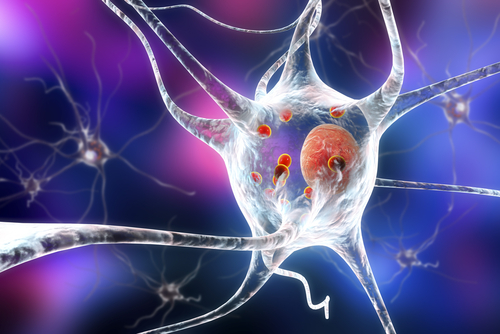Scripps Study Reveals Molecular Link Between Parkinson’s, Environmental Exposure

Researchers at Scripps Research Institute in La Jolla, California, have uncovered a molecular mechanism that links Parkinson’s disease and environmental exposure.
Their study, “S-Nitrosylation of PINK1 Attenuates PINK1/Parkin-Dependent Mitophagy in hiPSC-Based Parkinson’s Disease Models,” appeared in the journal Cell Reports.
It shows that too many reactive nitrogen molecules — which come from air pollution, pesticide exposure or aging — leads to a chemical reaction that blocks the PINK1 protein and prevents cells from getting rid of damaged mitochondria.
“The new finding gives us a clue as to where to intervene,” Dr. Stuart Lipton, the study’s lead author, said in a press release. “Mitochondria are the energy powerhouses of the cell.”
Lipton, a clinical neurologist at the University of California San Diego School of Medicine, explained that as people age, or when cells are stressed, mitochondria may be damaged. It’s PINK1’s job to trigger the process that eliminates these toxic mitochondria.
Because neurons require a lot of energy, PINK1 has a neuroprotective function, ensuring that cells only use healthy mitochondria and that they produce energy as effectively as possible. Mutations in this gene, which create faulty versions of PINK1, have been linked to increased risk for early-onset Parkinson’s disease.
But when looking at human stem cells and animal models of Parkinson’s disease, the Scripps team found that not only genetic factors affect PINK1. A chemical reaction called S-nitrosylation (SNO), which attaches a nitric oxide molecule to a protein, could also regulate this enzyme’s activity.
In particular, the SNO reaction prevented PINK1 from binding to its molecular partner, Parkin, and triggering the mitochondria clean-up process. Unlike genetic mutations, the SNO process is not inherited. Instead, nerve cells start “SNO-ing” proteins when they have elevated levels of reactive nitrogen molecules.
“The quantities of these reactive chemical species get so high that cells start SNO-ing proteins, like PINK1, that would normally not be SNO-ed,” said Lipton. “Formation of PINK-SNO is definitely harmful to nerve cells in the Parkinson’s brain.”
Although is not fully clear why cells accumulate these reactive nitrogen species, studies suggested this may occur in response to exposure to toxins such as pesticides and even air pollution. This suggests that a combination of genetic and environmental factors may contribute to nerve cell death and progression of Parkinson’s.
“This is a scary thought, but also a hopeful thought,” said Lipton. “If we can figure out how we’re doing this to ourselves, we may be able to control it.”
Since its discovery about 20 years ago the SNO reaction has been linked to several neurodegenerative disorders, cardiovascular disease and cancer. Lipton and his team are now investigating how to tackle the harmful effects of SNO in proteins like PINK1.
This study was funded by the National Institutes of Health, the Brain & Behavior Research Foundation and the Michael J. Fox Foundation.






